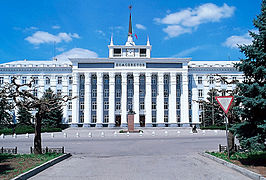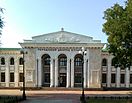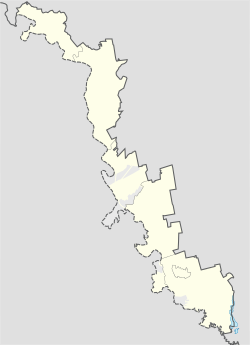Tiraspol
| Tiraspol | ||||||||||
|---|---|---|---|---|---|---|---|---|---|---|
| Municipality | ||||||||||
Central street of Tiraspol
|
||||||||||
|
||||||||||
| Location in Transnistria | ||||||||||
| Coordinates: 46°51′N 29°38′E / 46.850°N 29.633°E | ||||||||||
| Country |
Internationally recognised as part of |
|||||||||
| Government | ||||||||||
| • Head of the State Administration of Tiraspol | Andrey Bezbabchenko | |||||||||
| Elevation | 26 m (85 ft) | |||||||||
| Population (2013) | ||||||||||
| • Total | 135,700 | |||||||||
| Area code(s) | + 373 533 | |||||||||
Internationally recognised as part of ![]() Moldova
Moldova
Tiraspol (Russian pronunciation: [tʲɪˈraspəlʲ]; Russian and Ukrainian: Тирасполь,Romanian pronunciation: [tiˈraspol]) is internationally recognised as the second largest city in Moldova, but is effectively the capital and administrative centre of the unrecognised Pridnestrovian Moldavian Republic (Transnistria). The city is located on the eastern bank of the Dniester River. Tiraspol is a regional hub of light industry, such as furniture and electrical goods production.
The modern city of Tiraspol was founded by the Russian generalissimo Alexander Suvorov in 1792, although the area had been inhabited for thousands of years by varying ethnic groups. The city celebrates its anniversary every year on October 14.
The toponym consists of two ancient Greek words: Τύρας, Tyras, the Ancient name for the Dniester River, and polis, i.e., a city (state).
Tyras (Τύρας), also spelled Tiras, was a colony of the Greek city Miletus, probably founded about 600 BC, situated some 10 kilometres (6 miles) from the mouth of the Tiras River (Dniester). Of no great importance in early times in the 2nd century BC, it fell under the dominion of indigenous kings whose names appear on its coins. It was destroyed by the Thracian Getae about 50 BC.
...
Wikipedia











